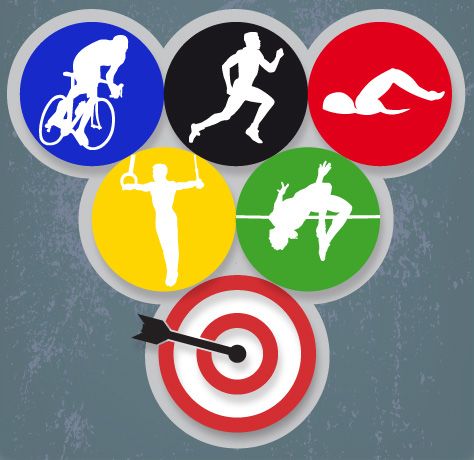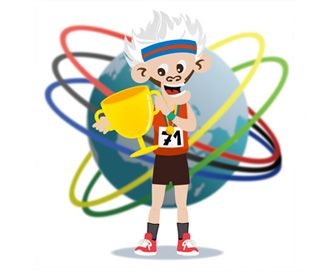
Advancing quickly to the front of the marketing strategy line is the 2016 Summer Olympics. There is little doubt that sports content, as well as real-time marketing, will play a key role in your Olympic advertising plan. However, businesses may want to consider broadening their video strategy so as not to lose a significant portion of the advertising opportunities.
With the Summer Games quickly approaching, it’s a sure bet that fans will be tuning in around the world as they watch athletes from around the globe compete in this 17-day sports frenzy.
Of course, many viewers will be watching the goings on on television, but the role that digital plays during this event shouldn’t be neglected or underestimated. Within the last year alone, the watch time for sports such as track and field, volleyball, gymnastics and swimming was greater than that of all the content ever broadcast on ESPN … by 30X! And those numbers are only going to swell when the Summer Games take center stage. To drive this point home, video searches on YouTube and other video sharing channels during the last Summer Games trumped not only the last World Cup, but each of the six past Super Bowls as well.
Savvy brand marketers realize that as the Summer Games audience makes the shift to online viewing, they should focus their marketing video platforms on content that is sports-related, targeting the millions of sports fanatics.
Here are a few ideas to broaden your target, making the most of the opportunities that the Summer Olympics bring with them:
Don’t limit your video content creation to just sports. Include the culture that surrounds the games. It’s easy to figure that sports-related content will be a part of your marketing platform, but there is more to the games than just the sports alone. The Olympics bring with them a cultural component. There are representatives participating from virtually all around the globe. More components that deserve a second look are the music, travel, language and even cuisine that relates to the nation that hosts the games-and beyond.
During the London-hosted Summer Games of 2012, video share sites were inundated with London travel-related searches. During the Winter Games of 2014, held in Sochi, travel interest for Russia expanded more than 20X-year over year. Experts speculate that because of the fact that all these searches were conducted during the live broadcasts of the games, and not months before or months after, it was the fans that were driving the search numbers up. They wanted to know more about the country that was hosting the Olympics.
It’s not just sports content that is effective during big sporting events; you don’t want to limit your effectiveness by limiting your targets. In fact, one in three viewers of the Summer Olympic Games have indicated that they rarely watch sports, but that they make an exception for the Olympics. And the sports fans don’t watch only sports-related videos. They are also 1.8 times more likely to tune into videos about gaming, 1.9 times more likely to watch automobile videos and 2.3 times more likely to watch travel-related content.
Based on this information, a brand marketer would be missing the advertising boat if they targeted sports content alone. They must reach out to viewers, no matter what they may be watching. This is where a broader net will catch more fish.
When you’re marketing to a particular target audience in a specific window of time, that time becomes precious. With real-time marketing, branders can quickly, and scalably create and deliver an ad that is pertinent to the moment at hand. It must be done quickly, but the measurement of the effectiveness must be executed as well. You need to know what’s effective, and to which audience you are appealing to.
Recent political campaigns have been a prime example of just how real-time marketing can be effective. As candidates are speaking, or debating, the digital ads can be generated and placed in front of live targeted voters with actual quotes and key points of the debates … while it’s happening!

As marketers gather real-time insights regarding their demographics, they can begin to understand the gender and age distribution of the viewers that are engaging with their content. This will assist them to determine if the crowd that their videos are reaching is the crowd that they’ve targeted.
In addition, don’t neglect the importance of multivariate testing. By distributing two variations of the same creative, you can analyze the comparison between the two, gauging metrics such as watch time and skip rate.
With Genius Monkey’s proprietary technology, we can gain a deeper insight of just how our clients’ campaigns are performing in the areas of consideration, interest and intent, making adjustments as needed, using our quants with human oversight.
In short, during the 17-day window of this year’s Summer Games, the athletes are not the only ones that will be competing for the gold-the marketers will also be in competition to win the attention of the consumers. Up close and personal digital has advanced the richness of major sporting and cultural events, and the Summer Olympics is a great example.

With Genius Monkey on their team, brand marketers can take advantage of the opportunities that come with quality content and effective video placement. They can now locate the sports fans and the casual watchers … whether they’re tuned in to sports-related content, or not!



